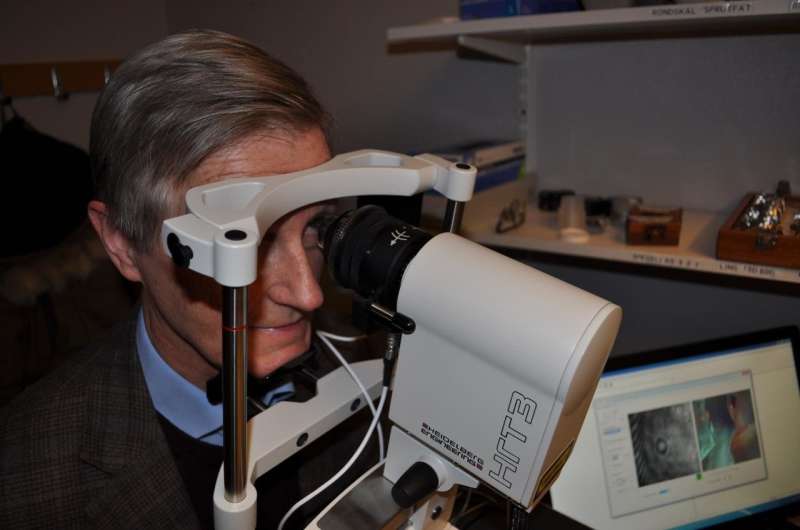Nerve damage in type 2 diabetes can be detected in the eye

By examining the cornea for nerve damage with a special microscope, it may be possible to diagnose type 2 diabetes. This according to a study among diabetics in Skelleftea, north Sweden.
"Although there is currently no cure, it's always an advantage to detect changes in the nerves early. Therefore, it's valuable to find a fast and safe diagnostic method," says Professor Olov Rolandsson, at the Department of Public Health and Clinical Medicine, Family Medicine, at Umea University, who led the study.
Type 2 diabetes can lead to impaired nerve function. Half of patients with type 2 diabetes for more than 10 years have a decrease in nerve function, which usually begins in their feet. The decrease may be expressed as reduced sensibility or pain and increases the risk of wounds. This can sometimes result in complications leading to amputation. There is currently no cure for this type of nerve damage, and the methods currently available to diagnose the condition are not entirely optimal.
When type 2 diabetes develops, small nerve fibres in the peripheral nervous system begin losing their function even before symptoms become apparent. These small peripheral nerve fibres are found in the skin, but also in the cornea. Because the cornea is transparent, it is an ideal place to study nerve damage that occurs in diabetics. In the study, involving 82 people from Skelleftea with or without type 2 diabetes, the participants' eyes were examined with a special microscope. The study found that the corneal nerve density was lower in individuals with type 2 diabetes compared to healthy subjects. If the individual had type 2 diabetes for a longer period of time, nerve density was even more reduced.
The study is the first of its kind in Sweden. Through cooperation between a Swedish research team and researchers in Germany, Italy and Norway, a method has been developed to create images in three dimensions of corneal nerves. The examination takes 10 minutes and does not cause any discomfort. The research team has also developed an automated analysis programme that allows the method to be used in general health care. Microscopic examination of the cornea occurs internationally, but the Skelleftea study is the first in the world to use the entire new method for assessing the degree of nerve damage in diabetics.
"There are good conditions for this new diagnostic method to be widely introduced in health care," says Olov Rolandsson.
The study is published in the scientific journal IOVS, Investigative Ophtalmology & Visual Science.
More information: Neil S. Lagali et al, Reduced Corneal Nerve Fiber Density in Type 2 Diabetes by Wide-Area Mosaic Analysis, Investigative Opthalmology & Visual Science (2017). DOI: 10.1167/iovs.17-22257


















